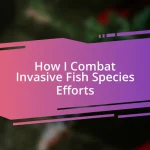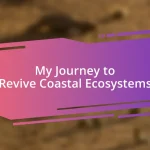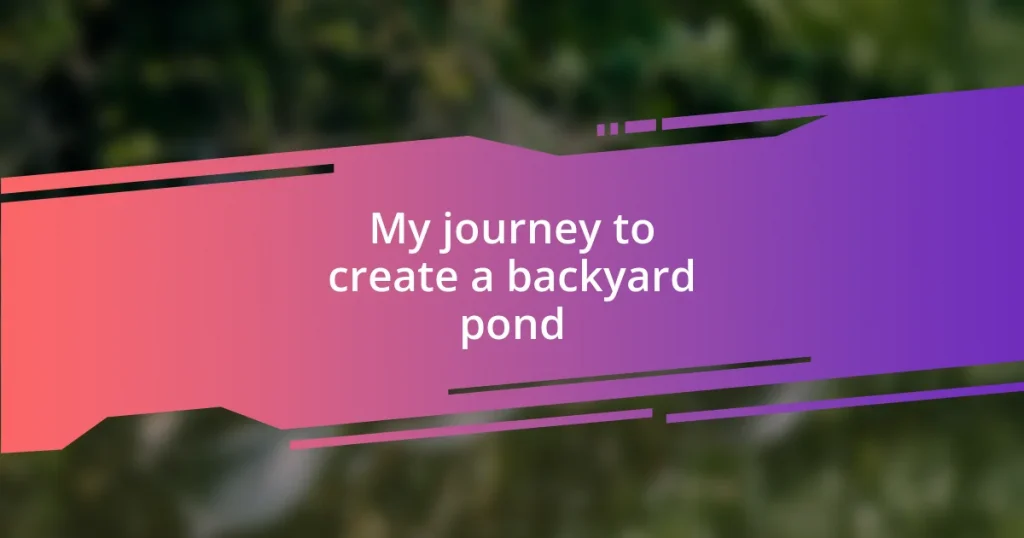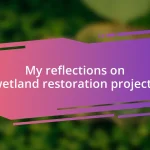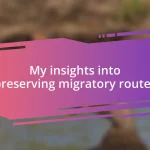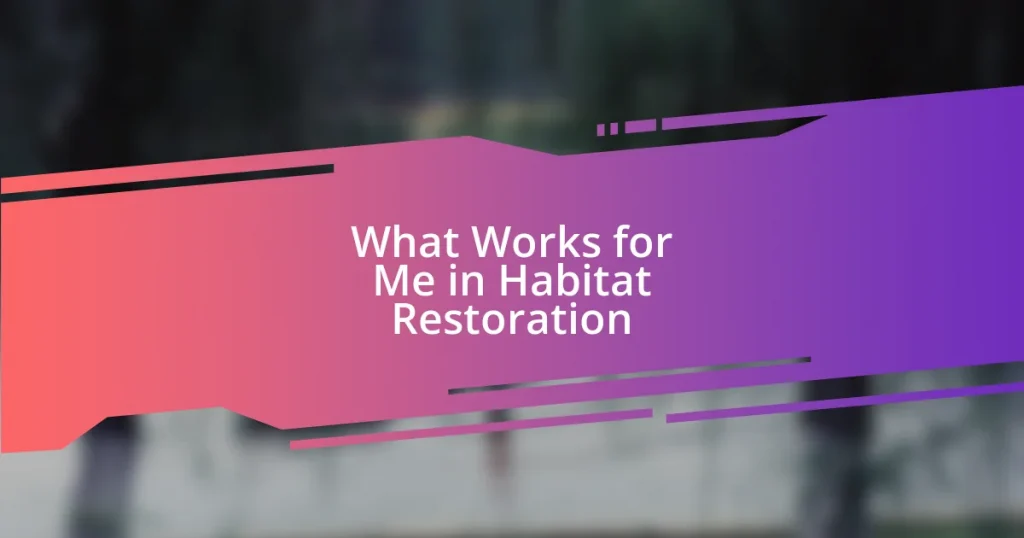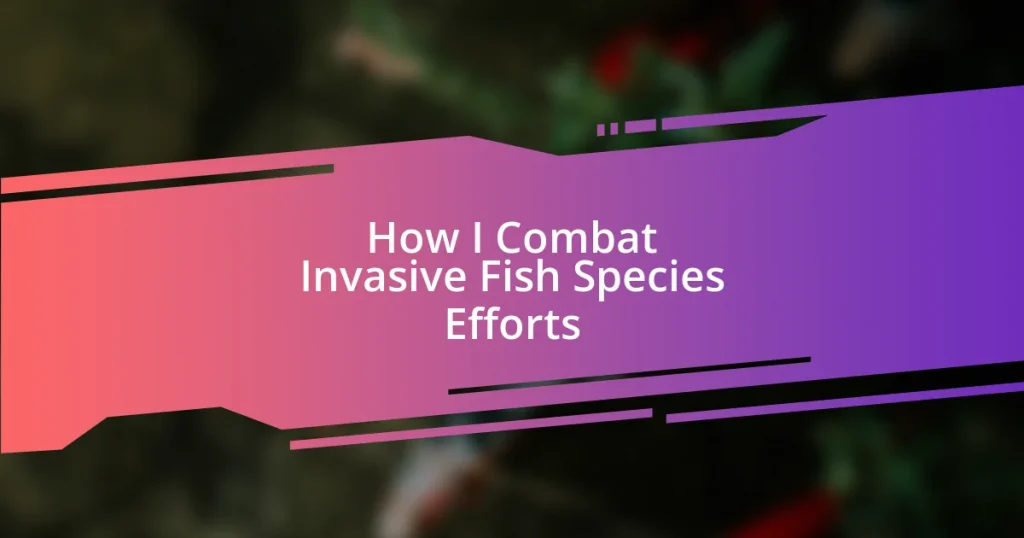Key takeaways:
- Careful planning and location selection are vital for a successful pond, considering factors like sunlight, accessibility, and proximity to trees.
- Selecting appropriate materials greatly influences the pond’s design and maintenance; flexible liners offer customization, while preformed ponds simplify installation.
- Regular maintenance and troubleshooting, including water quality management and addressing common issues like algae and mosquitoes, are essential for sustaining a healthy pond ecosystem.

Planning your backyard pond
When I first decided to create a backyard pond, I realized that careful planning was crucial. I began by sketching out my ideas, considering not just aesthetics but also how the pond would function within my landscape. Have you ever thought about how different plants and animals could interact with your water feature? I wanted a space that felt alive and harmonious with nature.
It’s essential to think about the size and depth of the pond, as these factors will dictate the type of wildlife you’ll attract. I remember wondering if I wanted koi or simply some goldfish. After diving into research, I found that larger ponds would support a more diverse ecosystem, which excited me. It’s like setting the stage for a vibrant aquatic world right in my backyard!
Don’t underestimate the impact of location either. I once placed my pond in a spot where I thought it would look pretty, but I learned the hard way how important sunlight and shade are for the health of the pond. Reflecting on it now, I think about how I could have saved myself some headaches by observing sunlight patterns throughout the day before settling on a design. Planning ahead can make all the difference!

Choosing the right location
Choosing the right location for your pond is pivotal. I remember excitedly picking a spot near my patio, thinking it would create a serene view. However, I quickly realized that not all views are practical. I hadn’t considered water drainage or how different trees would affect sunlight exposure. Trees can drop leaves and debris, leading to extra maintenance work. Trust me, it’s easy to get swept away by the beauty of a particular sight but taking a step back to consider the broader picture makes all the difference.
Here are some factors to keep in mind when choosing the location:
- Sunlight: Aim for a balance of sun and shade; too much sun can lead to algae growth while too much shade can hinder plant growth.
- Accessibility: Ensure you can easily maintain the pond, including cleaning and feeding any fish.
- Distance from Trees: Avoid placing your pond too close to trees to limit falling leaves and roots that can disturb the pond’s structure.
- Slope and Drainage: Choose a flat area where water won’t pool or erode the pond’s edges.
- Local Wildlife: Consider the wildlife that may frequent your yard to create a welcoming environment for them.
Reflecting on these factors can guide your decision and help avoid unnecessary challenges later on. I wish I had done a thorough assessment beforehand!

Selecting pond materials
Selecting the right materials for your pond is a pivotal step I somewhat underestimated at first. I recall standing in a home improvement store, faced with a dizzying array of options, and feeling a bit overwhelmed. Ultimately, I chose a flexible liner because of its ease of installation and ability to conform to various shapes. As I worked, I appreciated how this material allowed me to craft the pond’s contours just as I envisioned. Have you noticed how the various materials can affect the overall look and maintenance of your pond?
I learned that the structure of your pond would heavily depend on the materials you select. Some folks opt for preformed ponds for their simplicity, while others, like myself, enjoy the customizable benefits of flexible liners. In my experience, a liner offers the opportunity to create a unique design, but it also requires diligent attention to detail during installation to avoid future leaks. Then again, going with preformed options made some of my friends’ projects far less time-consuming, which has its own appeal.
Here’s a little comparison to help clarify my thoughts:
| Material | Advantages | Disadvantages |
|---|---|---|
| Flexible Liner | Customizable shapes, accommodates varied depths | Requires careful installation, risk of punctures |
| Preformed Pond | Easy to install, sturdy | Limited shapes and sizes, can be more visible |
| Concrete | Long-lasting, can support larger fish | Labor-intensive, expensive, requires sealing |
| Fiberglass | Durable, lightweight, various designs available | Costly, can fade over time |
Remember, selecting the right materials isn’t just a practical decision but also an emotional one. I wanted my pond to reflect my personality and aesthetic vision, providing tranquility and beauty for years to come. Have you thought about how materials might echo your style?
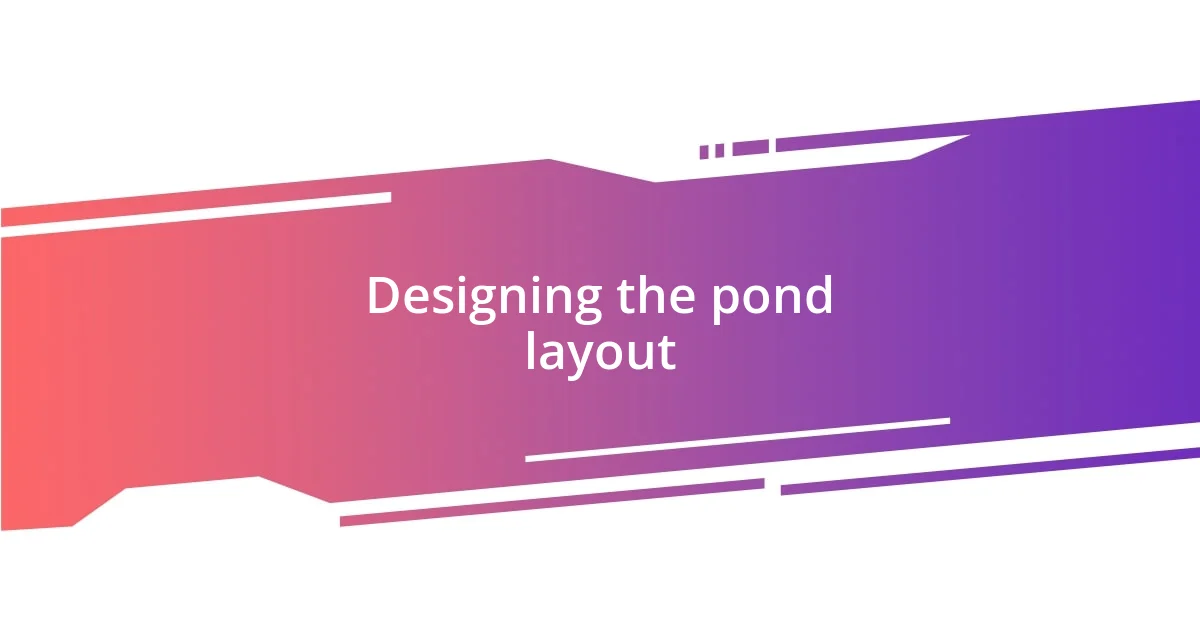
Designing the pond layout
Designing the layout of your pond is where the fun really begins! As I laid out my design, I visualized not just the pond itself but how it would harmonize with the surrounding landscape. I often found myself sketching the contours on paper, imagining rock placements and plant arrangements. How do you want your pond to feel? I aimed for a natural, serene vibe, creating gentle curves rather than sharp angles. This helped to create flow, making the space feel inviting to both me and any critters that might visit.
While I was mapping out my design, I realized that incorporating different depths added visual interest and varied habitats for wildlife. One of my favorite moments was when I decided to create a small shallow area for water lilies; it brought a vibrant splash of color, especially as they began to bloom. I recommend thinking about how the layout will influence lighting, as well. I found that placing my pond slightly away from direct sunlight in some parts prevented overgrowth of algae, ensuring a healthy ecosystem. Isn’t it amazing how such small design choices can lead to big changes in the pond’s environment?
I also discovered the importance of considering viewing angles. As I stood on my patio gazing at the pond, I positioned my plants and rocks to frame the scene beautifully. It almost felt like I was creating a living artwork! During evening gatherings with friends, responses to the design choices underscored how crucial this aspect was—everyone loved how the waterfall cascaded into the pond, creating a soothing sound. Have you thought about how your layout will impact the way you experience your pond? Staying mindful of these details can turn the ordinary into the extraordinary.
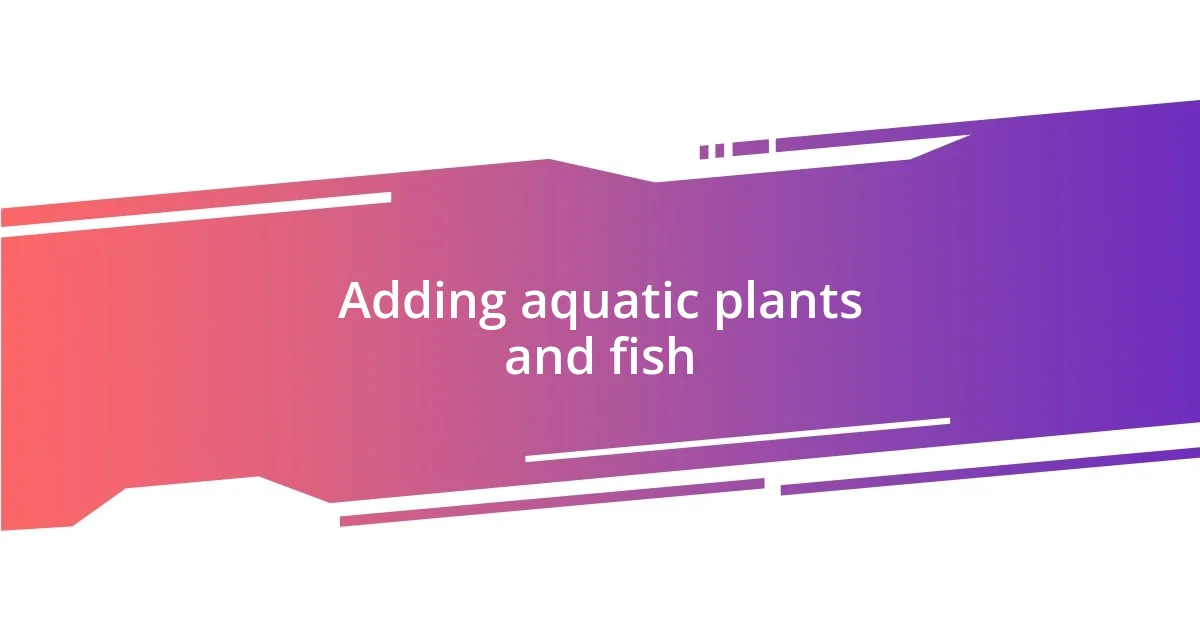
Adding aquatic plants and fish
Adding aquatic plants and fish to your pond is a delightful step in creating a thriving ecosystem. When I introduced lily pads and floating ferns, I noticed how they transformed the water’s surface, adding layers of beauty. Watching the fish dart in and out of these plants brought a sense of life that I never expected; it was like my pond gained its own personality. Have you ever felt that connection with nature in your own backyard?
Selecting the right fish was just as crucial, and I found it a bit daunting at first. I opted for goldfish because they’re colorful and easy to care for. Seeing them glide through the water truly brightened my days. It’s fascinating how these fish not only add color but also help keep algae in check, creating a more balanced environment. I’ve often wondered if my decisions positively influenced the pond’s health—has anyone else felt this joy in watching their aquatic life flourish?
I learned that layering different types of plants can enhance the ecological balance. For instance, I added submerged plants like hornwort to oxygenate the water, which also provides shelter for the fish. Observing how all these elements work together has been a rewarding journey. Don’t you think it’s remarkable how interconnected everything becomes? It truly engages your senses and makes long hours spent in the garden worthwhile.
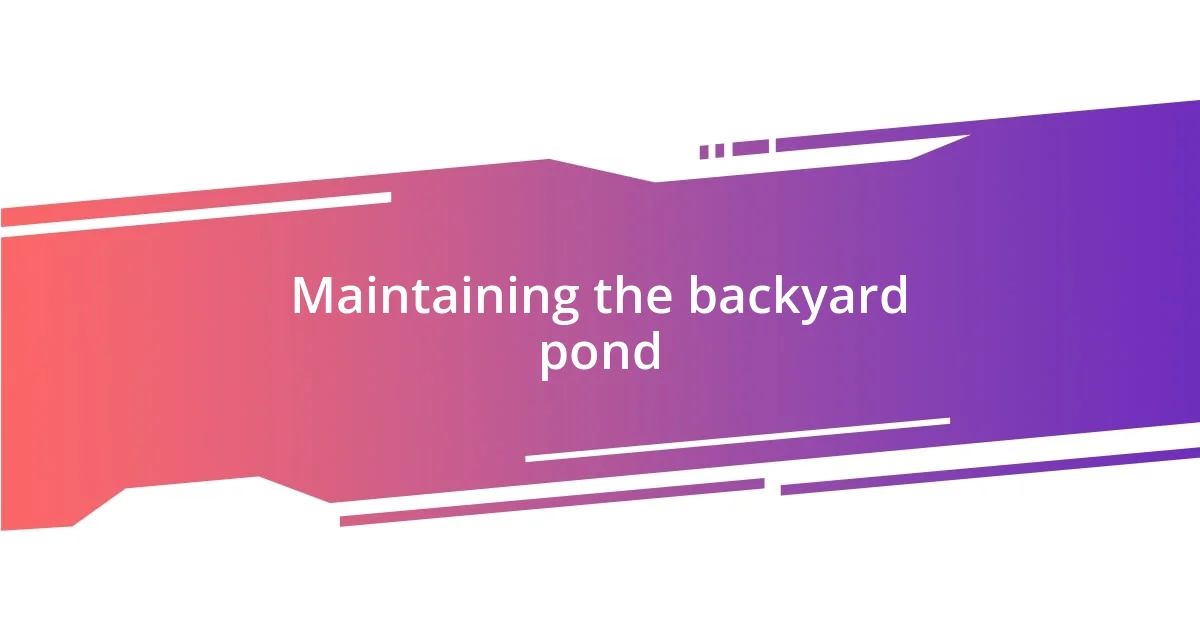
Maintaining the backyard pond
Maintaining a backyard pond can feel like a mini-adventure. I never anticipated how much joy I’d get from skimming the surface for fallen leaves and checking water levels. For me, the simple act of doing a weekly maintenance check quickly turned into a time for reflection and connection with nature. Have you ever paused to appreciate these moments? I found that incorporating a schedule made the tasks feel less daunting and more enjoyable.
The water quality is something I initially struggled to manage, but my learning curve was steep and satisfying. I started testing the pH levels regularly, using a simple kit I picked up online. It amazed me how balancing the water chemistry could significantly improve the health of my fish and plants. There’s something fulfilling about watching the pond thrive, knowing that my efforts played a part in that transformation. Have you considered how a little diligence can lead to a flourishing ecosystem right in your backyard?
Fertilizing the plants became a rewarding ritual as well. I took the time to research organic options that would enrich the soil without hurting the pond’s ecosystem. Applying a slow-release fertilizer in spring became a habit I looked forward to—almost like giving my plants a little energy boost just as they were waking up for the season. Watching them flourish afterward sparked a sense of accomplishment that was hard to beat. Isn’t it amazing how investing a bit of effort can reap such vibrant rewards?
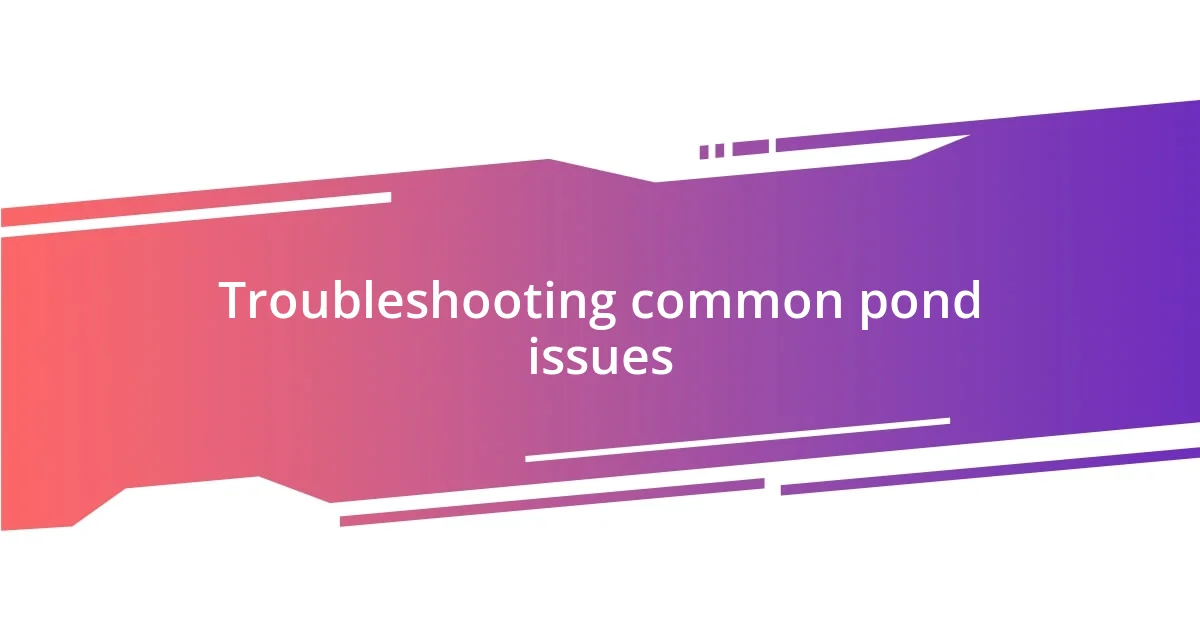
Troubleshooting common pond issues
Inevitably, some pond problems can arise, and it’s all part of the journey. One time, I noticed my water was becoming murky, which felt alarming at first. After digging a little deeper into my research, I found that adding beneficial bacteria could help clear up the water while keeping algae at bay. Now, I consider that bacteria my pond’s secret weapon. Have you ever had those surprising solutions that change the game for you?
Another common issue I encountered was dealing with mosquitoes. At one point, I felt like I was hosting a mosquito convention every evening! I quickly learned that introducing predator fish, like guppies, could help manage their population. It’s striking how small adjustments can create a ripple effect, isn’t it? The shift from annoyance to tranquility as my pond became a more balanced environment was quite a lesson in patience and teamwork.
Lastly, I faced the concern of keeping my plants healthy when they began to outgrow their space. I found myself feeling sad about having to prune them—after all, I felt like I was cutting away beauty! However, realizing that regular pruning encourages growth allowed me to see it in a new light. It’s like tending to a friendship; sometimes, you need to let go of what isn’t working to allow new blossoms to flourish. Do you see the similarities in caring for nature and nurturing your own relationships?

